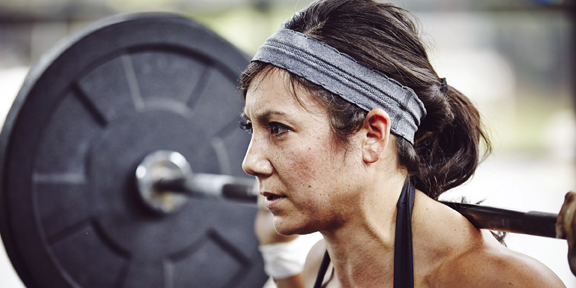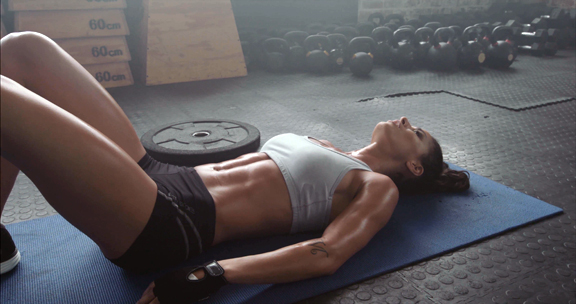Give it a Rest: It’s OK to Skip Your Workout
Give it a rest! It’s okay to skip your workout! Years of research and experience have led to a surprising new consensus among trainers, coaches and athletes, best summed up as “Not so fast.” It turns out that one of the best things you can do for your next athletic ambition is to take some downtime, keep workouts short, and even skip the gym altogether.
Many fitness junkies find the idea of taking a day off as absurd! It can only mean one thing – a loss of all gains. While it may feel counter-intuitive to take regular days off from the gym, taking a break will actually help you achieve your ultimate goal. So, if you work out regularly, give yourself permission to take at least one to two days off each week to give your body a well-deserved break.
Exercise Recommendations
The American College of Sports Medicine and the American Heart Association recommend that adults under age 65 aim for 30 minutes of moderate intensity aerobic exercise five days per week or 20 minutes of vigorous intensity aerobic exercise three days per week. Strength training is recommended at least twice per week to target all muscle groups. Those new to fitness should increase the duration and intensity of their workouts slowly to prevent injury and burnout.
Rest days depend on the type of athlete you are. Mind and body athletes (think Pilates and yoga) may want to take a day off altogether, whereas bodybuilders may only want to take a day off from lifting, but still do a little cardio. It also depends on your level of fitness. If you’re just now starting out in the fitness world, your rest day should probably be a real rest day in which you do no activity at all.
How should you eat on a rest day? I tell my clients to “eat according to their activity level.” This means use common sense! Food is fuel, so you obviously don’t need to eat as many calories on a rest day as you would on a day that you’re hitting the gym.
Importance of Rest and Recovery
Strength and endurance gains actually happen during recovery, not in the gym. To understand how this works, it helps to know a core truth about all athletic training. We don’t actually get fitter at the gym, on the road, or in the pool. What we really do while training is apply a stimulus that elevates our heart rate, breaks down muscle fibers, causes the adrenal glands to secrete the stress hormones adrenaline and cortisol and generally tells our body that the status quo won’t cut it anymore. Allowing your body time to recover between workouts helps your muscles repair damage sustained during exercise to prepare for the next workout.
The “getting fitter” part, the body’s response to that stimulus, comes afterward. While you eat and rest, the body gets to work repairing tissue damage, strengthening the heart and other muscles, restoring depleted fuel reserves and getting better at transporting oxygen throughout the body, making itself a little more efficient and stronger than before.
By stressing the body to stimulate change, and then letting it recover, we stack up these little adaptations one on top of the other until we find ourselves fit enough to run a 10 K, lift a heavier weight, or play the best basketball game of our life.

Rest days depend on the type of athlete you are. Mind and body athletes (think Pilates and yoga) may want to take a day off altogether, whereas bodybuilders may only want to take a day off from lifting, but still do a little cardio.
Make the Most of Your Time Off
Taking a long break doesn’t mean you have to become a couch potato. You don’t want to fall completely off the wagon. You can of course continue to stay busy with “life” and with your normal daily activities.
If you’re a cyclist or runner, for example, learn proper squat form and do a little winter strength training to fortify yourself against injury. If obstacle racing happens to be your thing, join a mixed-martial-arts gym for a couple of months, getting that same full-body experience, but in a different format. If you play basketball or tennis, dabble in mountain biking to keep the heart and lungs working, while giving the joints a break. Not only will this give your body some much needed rest, it will also reinforce how much you love it, which will keep that motivation high.
Signs of Overtraining

Overtraining makes you more susceptible to illness and overuse in injuries.
The amount of exercise that causes overtraining varies from person to person. A seasoned athlete may be able to hit the gym for two hours six days a week as part of a regular training program, but this level of exercise would quickly leave most people burned out or injured. Signs of overtraining include exhaustion and fatigue, insomnia, moodiness, decreased performance, lack of appetite and muscle soreness. Rest is crucial to improving your fitness and athletic performance, and if you feel like you may be overtraining, it’s wise to cut back on the time you spend at the gym. Overtraining makes you more susceptible to illness and overuse injuries, which may prevent you from hitting the gym for weeks or even months. While overtrained athletes may require months of rest, average gym patrons typically need to take more days off per week and focus on shorter, easier workouts while their bodies recover.
In Conclusion:
The best advice I can give you is to listen to your body. Set aside your gym and sports routines once or twice a week, precisely so you can return stronger than ever. If you are sick, exhausted, injured, or exceptionally sore or fatigued, you may need to stay out of the gym longer.
So, take a break! Take this time to reflect on how far you’ve already come and acknowledge and be grateful for your body, willpower and dedication. Trust me, your body will Thank You! Good luck to you.
I have been a personal trainer for over seventeen years and I absolutely love what I do. I honestly feel that I have one of the best jobs out there! The most rewarding part of my profession is helping one of my clients succeed at reaching their personal fitness goals. Making a difference in someone’s life makes it all worthwhile. I am currently certified by the National Sports Conditioning Association, Apex Fitness Group, and the International Sports Science Association.











